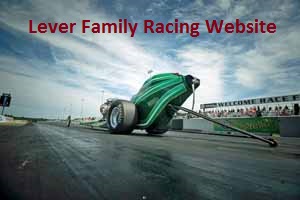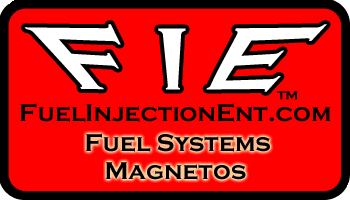1
Funny Cars / Re: The way we were
« on: June 05, 2018, 08:40:08 PM »
I think this was 75 or 76 as this was one of the first Monza FC. Bodies. We had a tough time with tech as it was heavily alterered. The rear wheel wells were stretched and widened, we initially had Lexan covers on the headlight (we lost the argument), the windshield opening was altered, tech claimed the front wheel bumps were too tall, while we didnít stretch the body beyond spec, it was done in the molding. There were other mods to really make it a clean car. Thanks to a couple big name guys that did essentially the same modifications, we were allowed to run.
A side note, notice how far the motor is out compared to other cars of the era. I believe it was 65-66 inches while most were 60 or less. We did some home work since I was back in engineering school on weight distribution and power application. I made some assumptions as hard data was not available and data logging was not available back then.
We wanted the car light and strong and to go straight without a weight bar. I made spring loaded wheelie bars that were adjustable. We had a weight bar that we filled with lead shot ( it was too heavy for tech) but served its purpose to distract tech. We simply emptied it before we ran. It was polished aluminum. We were not under weight if I drank enough water and didnít sweat too much during the run. With the motor way out there was plenty of weight on the front. The front spoiler barely passed for height.
Someone has a picture in the lights of the windshield flexing. It was just 1/8Ē thick. We found that spilled alcohol would start cracks where ever there were holes drilled or the cutout for the blower was. You could bring cracked windshields in for free replacement as they were considered window glazing. Some clown bragged that he spilled alcohol on his racing. Well that ended the free replacements. They only lasted a month so we had several pre fitted and a spare in the trailer. Two for double headers.
These motors were cast iron stock blocks that we updated in the shop I worked at. The same for the heads. I ported one set and said never again. They only lasted 15-20 runs tops. So we were constantly on the lookout for heads and blocks. The aluminum blocks were just coming out and were unavailable to us small guys. Aluminum heads had not arrived yet either.
Valve springs were the major maintenance item. 10 runs and they were history. The spring technology wasnít what it is today by a long shot. They were really expensive and hard to get the good ones back then.
We had the first .750 lift roller cam in the area and only a few west coast alcohol guys had them. It was a huge gain and the real power adder for this car. It was hard to keep up with the valve train however. Fortunately I had access to the auto shop for equipment. It just took a lot of time.
Iím trying to get Tom to come on board as he remembers more details than I. My job was to get the car down the track and into the next round. Tom and Eddy took care of most between round stuff. I viewed the starting line, both lanes, any markers, wind, track conditions, Christmas tree position ( they changed track to track) I also spied on the competitors, ( hey no harm in looking), I looked at attitudes, behavior and competitiveness. When you are the underdog use everything you can get.
Thatís it for tonight
Byron
A side note, notice how far the motor is out compared to other cars of the era. I believe it was 65-66 inches while most were 60 or less. We did some home work since I was back in engineering school on weight distribution and power application. I made some assumptions as hard data was not available and data logging was not available back then.
We wanted the car light and strong and to go straight without a weight bar. I made spring loaded wheelie bars that were adjustable. We had a weight bar that we filled with lead shot ( it was too heavy for tech) but served its purpose to distract tech. We simply emptied it before we ran. It was polished aluminum. We were not under weight if I drank enough water and didnít sweat too much during the run. With the motor way out there was plenty of weight on the front. The front spoiler barely passed for height.
Someone has a picture in the lights of the windshield flexing. It was just 1/8Ē thick. We found that spilled alcohol would start cracks where ever there were holes drilled or the cutout for the blower was. You could bring cracked windshields in for free replacement as they were considered window glazing. Some clown bragged that he spilled alcohol on his racing. Well that ended the free replacements. They only lasted a month so we had several pre fitted and a spare in the trailer. Two for double headers.
These motors were cast iron stock blocks that we updated in the shop I worked at. The same for the heads. I ported one set and said never again. They only lasted 15-20 runs tops. So we were constantly on the lookout for heads and blocks. The aluminum blocks were just coming out and were unavailable to us small guys. Aluminum heads had not arrived yet either.
Valve springs were the major maintenance item. 10 runs and they were history. The spring technology wasnít what it is today by a long shot. They were really expensive and hard to get the good ones back then.
We had the first .750 lift roller cam in the area and only a few west coast alcohol guys had them. It was a huge gain and the real power adder for this car. It was hard to keep up with the valve train however. Fortunately I had access to the auto shop for equipment. It just took a lot of time.
Iím trying to get Tom to come on board as he remembers more details than I. My job was to get the car down the track and into the next round. Tom and Eddy took care of most between round stuff. I viewed the starting line, both lanes, any markers, wind, track conditions, Christmas tree position ( they changed track to track) I also spied on the competitors, ( hey no harm in looking), I looked at attitudes, behavior and competitiveness. When you are the underdog use everything you can get.
Thatís it for tonight
Byron




